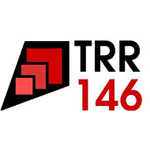
Seminar über Theorie der kondensierten Materie / TRR146 Seminar
March 21, 2012 at
1:15 p.m.
in
Gernot-Gräff-Raum (05-431)
F. Schmid
friederike.schmid@uni-mainz.de
P. Virnau
virnau@uni-mainz.de
L. Stelzl
lstelzl@uni-mainz.de
Note: Sondertermin: Gernot-Gräff-Raum (05-431), 13:15 Uhr
Ab-initio multiscale methods to study the effects of chemical impurities in metals
Georg Schusteritsch (School of Engineering and Applied Sciences, Harvard University, Cambridge, USA)
Two different approaches to ab-initio multiscale methods for metals are presented. I will first discuss a sequential method based on results from Rice’s continuum theory, combining arguments on generalizedstacking- fault energetics and the unstable stacking energy criterion with first principles density-functionaltheory (DFT) calculations. We study the embrittlement of Ni due to the inclusion of S impurities at a 5(012) grain boundary (GB) by determining the ductility parameter D as a ratio of the work of separation Ws and the unstable stacking energy us. This describes the competition between grain decohesion and grain boundary sliding (GBS). Our results show that grain decohesion is enhanced but GBS suppressed by S impurity segregation to the GB. In the second part of this talk, I present a concurrent multiscale method, coupling a small region treated by first-principles quantum mechanics, to a large classical atomistics region. Our method is based on total energy arguments that are applicable to metals. We employ Kohn- Sham (KS) DFT in the region of interest and couple this to the classical Embedded Atom Method (EAM).
We use this method to address a similar GB system in Cu to study its embrittlement by Pb and Bi impurities. Their effect is compared to Ag impurities, which are known to segregate to the GB but not embrittle Cu. We find that Bi and Pb weaken and hence embrittle the Cu GB. In contrast Ag impurities at the GB plane enhance cohesion.